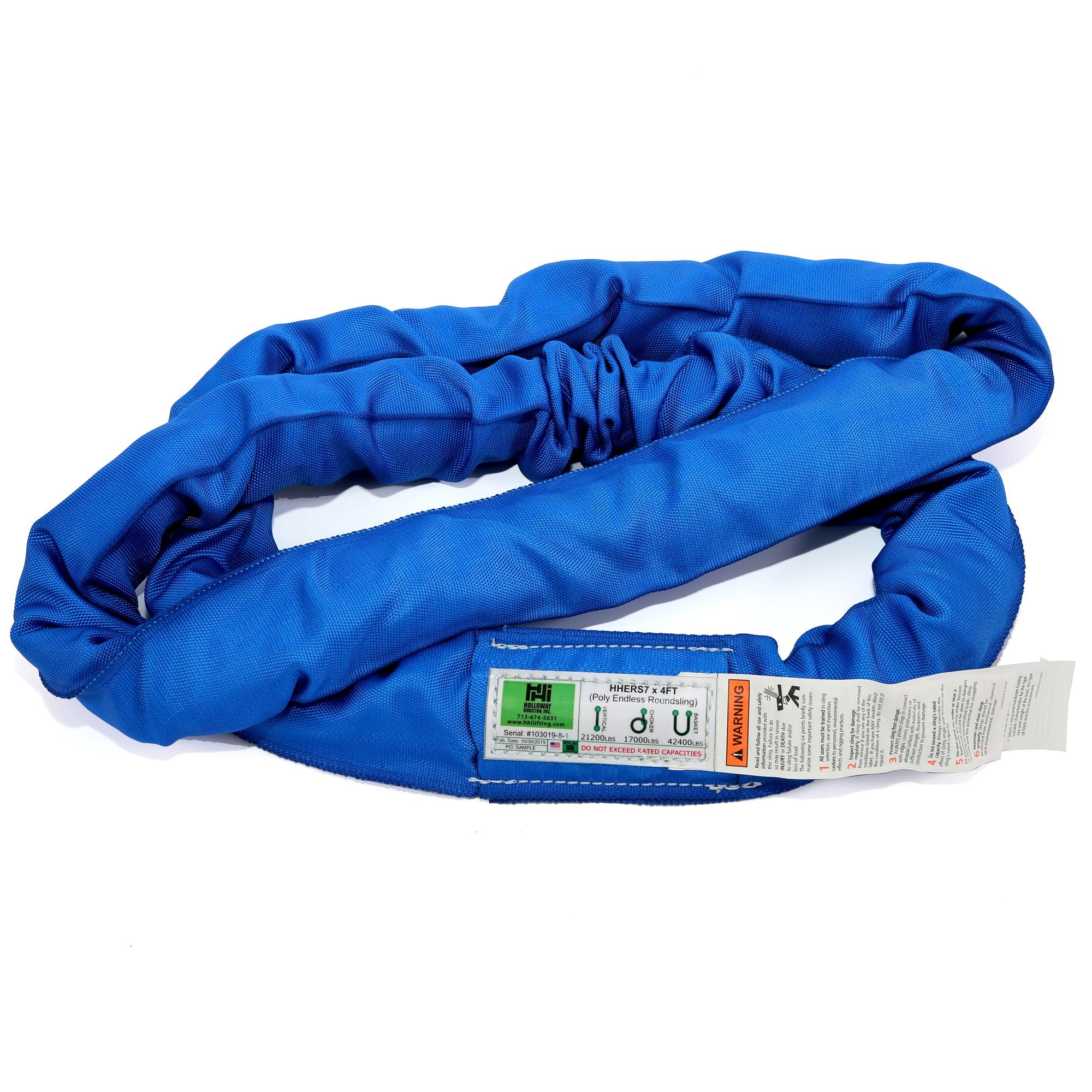Web Slings: Strength in Weaving
Web slings, as the name suggests, are crafted from woven synthetic fibers such as nylon, polyester, or polypropylene. These eye to eye straps are renowned for their exceptional strength-to-weight ratio and resistance to abrasion and UV rays. They are typically flat and feature reinforced loops on both ends for attachment to hoists, cranes and other rigging accessories.Where Are They Used?
Web slings find applications across various industries, including construction, manufacturing, and transportation. They are commonly used for lifting irregularly shaped objects, as their flexible design conforms to the load's contours, reducing the risk of slippage, while their flat surface provides great load distribution.
Advantages:
- Lightweight: Easy to handle and transport.
- Non-marring: Gentle on delicate surfaces.
- Cost-effective: Generally more affordable than metal alternatives.
- Versatility: Suitable for a wide range of lifting tasks.
Disadvantages:
- Susceptible to cuts and abrasions: Careful inspection is necessary to ensure safety.
- Limited heat resistance: Not suitable for extreme temperatures.
Round Slings: Flexible Powerhouses
Round slings, also known as endless slings, are constructed from a continuous loop of synthetic material, typically polyester. Unlike web slings, which have a flat profile, round slings are tubular in shape. This design distributes the load evenly, reducing stress on individual fibers and enhancing durability.
Where Are They Used?
Round slings excel in heavy-duty lifting applications where flexibility and strength are paramount. They are ideal for lifting delicate or fragile loads thanks to their soft, pliable construction.
Advantages:
- Excellent load distribution: Minimizes pressure points on the load.
- High strength-to-weight ratio: Capable of lifting heavy loads with ease.
- Soft and flexible: Gentle on fragile surfaces.
- Easy to inspect: Any damage is readily visible, ensuring safety.
- Can easily be choked and used in basket formation.
Disadvantages:
- Sensitive to sharp edges: Extra care must be taken to avoid damage.
- Limited resistance to chemicals and UV rays: Regular maintenance is essential for longevity.
Comparison with Chain and Wire Rope Slings
While synthetic lifting straps offer numerous advantages, traditional chain and wire rope slings remain popular choices for certain applications.Chain Slings:
- Superior durability and resistance to abrasion and cutting.
- Heavyweight and less flexible, limiting versatility.
- Prone to rust and corrosion without proper maintenance.
Wire Rope Slings:
- Exceptional strength and durability.
- More flexible than chain slings but less so than synthetic options.
- Susceptible to kinking and birdcaging if not handled correctly.
In summary, synthetic lifting straps, including web slings and round slings, offer a compelling blend of strength, flexibility, and affordability. While they may not always replace traditional chain and wire rope slings, their versatility and ease of use make them invaluable assets in any lifting operation. Whether you're hoisting heavy machinery or delicate cargo, choosing the right slings is key to ensuring efficiency, safety, and peace of mind.
At LES USA, we offer a wide selection of high-quality slings and straps to suit your specific needs. Explore our range today and elevate your lifting capabilities with confidence.

